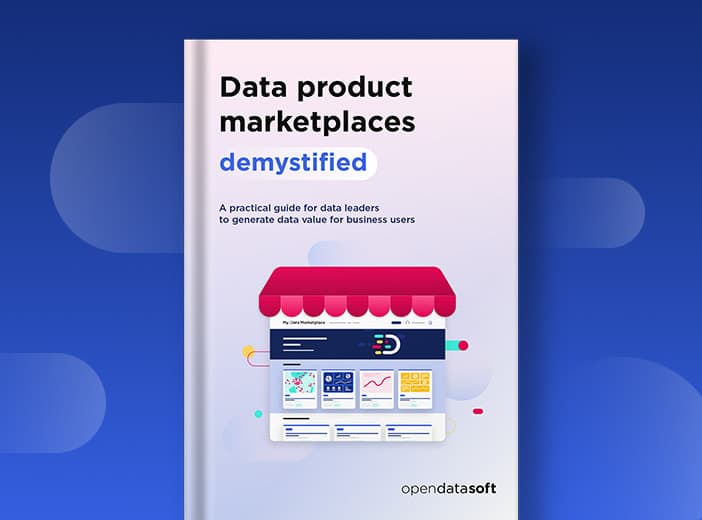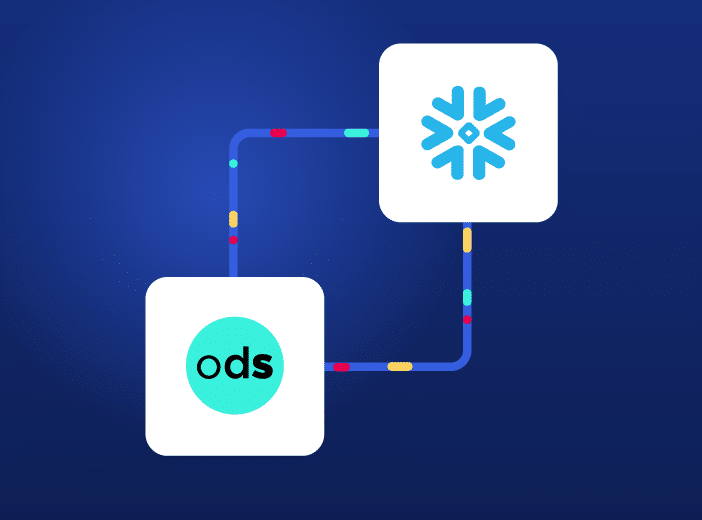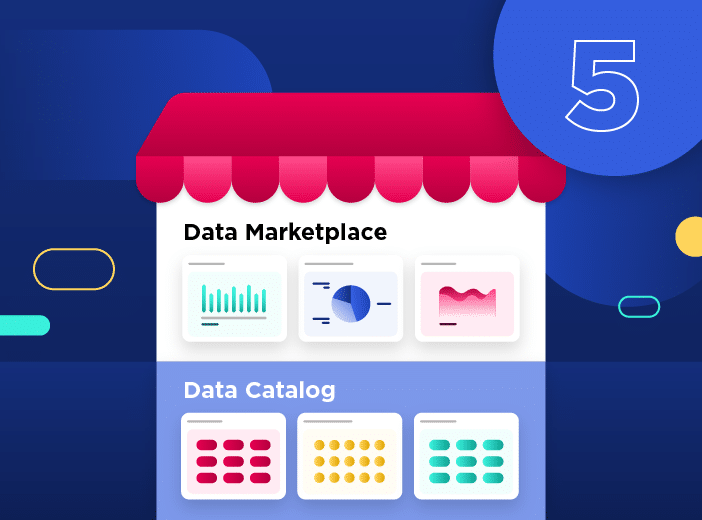How do workflows on a data marketplace connect business users to data to accelerate value creation?
A well-designed data marketplace is about more than just sharing data assets or data products. It integrates a range of workflows that structure and meet specific needs such as access requests, use case sharing, data collection and data enrichment. This invisible framework transforms a source of data into a collaborative space.

Without these workflows, interactions remain informal. Users send emails asking questions, get unclear responses and face changeable deadlines. Data teams are overwhelmed by urgent queries, business teams lack visibility into the bigger picture, and data governance processes are undermined.
Workflows provide the framework for data sharing success. They centralize conversations about data, document each step, and give users a way to act within a controlled set of processes. The result is less friction, more reuse, and a living platform that connects the people involved, not just the data itself.
Workflows: A functional and strategic foundation
What is a workflow?
A workflow refers to a sequence of structured steps that frame and govern a business process: request, validation, notification, archiving. It defines who does what, when, according to what rules. Everyone involved knows their scope of action and the parameters for every decision are mapped out. On a data marketplace, it makes it possible to organize interactions around data without depending on informal back channels outside the solution itself.
Why integrate workflows directly into the data marketplace?
As soon as a workflow goes through external tools, such as emails or intranet forms, control fragments. Context is lost, deadlines stretch, and governance is diluted. By adding workflows into the data marketplace, they are integrated into the same space where data is already being explored. Requests are in context. Activity history remains visible. Access rules, reference contacts, and metadata is all there, in one environment.
Clear deployment benefits
Benefits are visible as soon as workflows are integrated into your data marketplace. Requests are centralized, validations are tracked, deadlines are shortened. No more manual reminders and forgotten verbal approvals. Every action is time-stamped, every decision documented. The marketplace is no longer a showcase: it is now a managed space for data use, a framework for organization, and a living community that encourages business users to come back to it regularly.
Three workflows that transform uses
Workflows are not ancillary functions. They support collaboration between data leaders and business users. Here are three key workflows that integrate into the data marketplace to transform data use and enable ongoing collaboration between data teams and business users.
1. Submit a data use case: Transforming a siloed asset into a shared resource
A data marketplace is more than just a place to publish datasets. It also makes it possible to enhance how data is used, such as through a dashboard built from a business dataset, an internal application that reuses several sources, or a relevant visualization that is shared in meetings. These examples are often created by specific users but are not always shared more widely. They deserve to be more visible to drive their reuse and to inspire others.
Some data platforms and marketplaces make it possible to formalize this sharing through a dedicated workflow that manages use case submissions. As a first step, the business user accesses an embedded form where they can:
- Describe what they have produced
- List the datasets used
- Specify the business objective and the impact achieved.
Once completed, the form is sent to an administrator, who checks the relevance of the use case, the clarity of the information, and anonymizes areas if required. After this validation, it is then published in the marketplace catalog, where it becomes easily accessible, joining all the other assets and data products available to the organization. This increases reuse and multiplies the value of data. The process enables business users to take an active role in data sharing and transforms their individual work into a collective benefit. It creates collaboration: teams inspire each other, and data uses circulate, meaning it becomes a way of working together, rather than a technical object. Overall, the concept of data-driven organization takes shape naturally, through greater use case sharing.
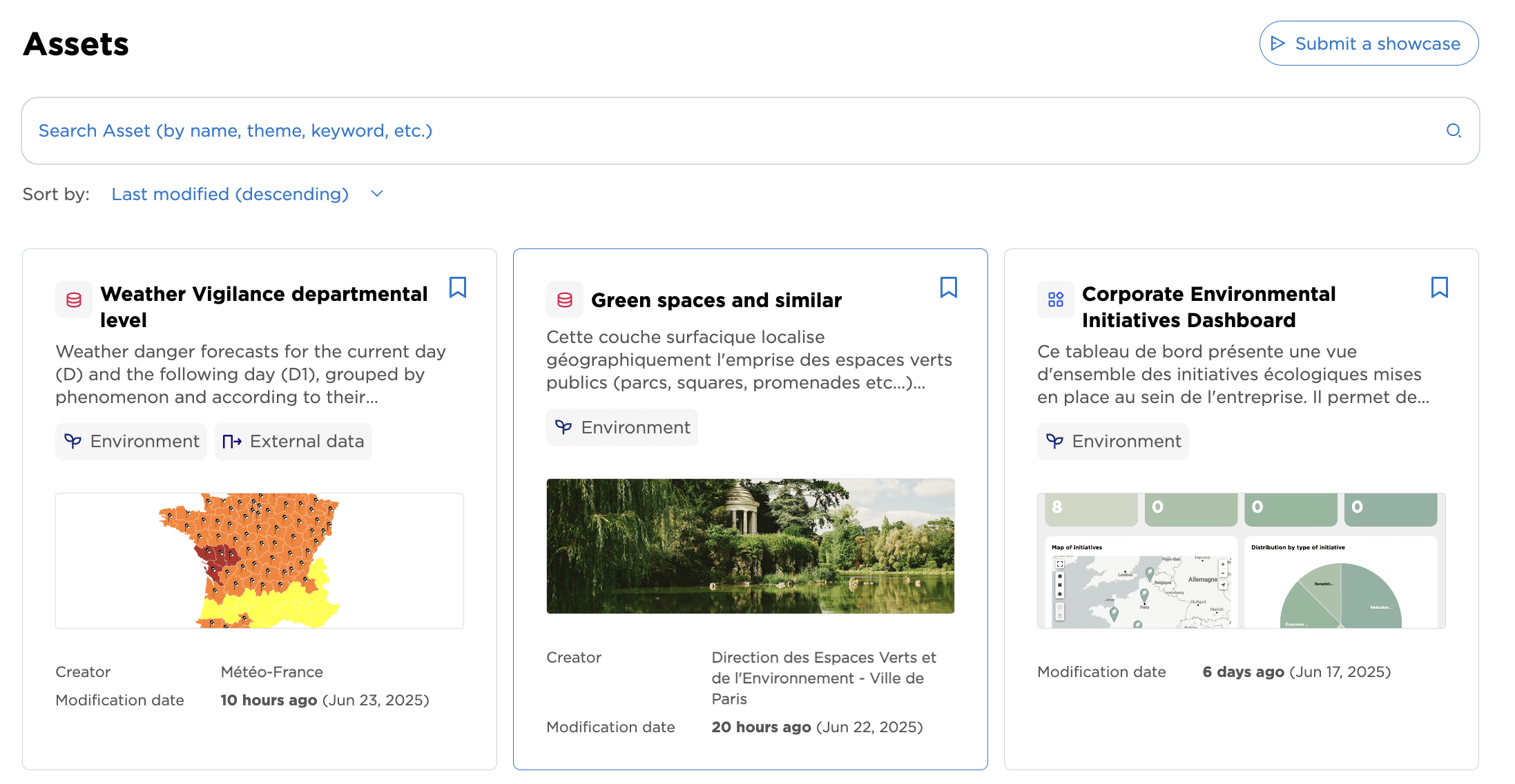
An embedded form allows the user to describe their use case, list the datasets used, and make it visible to the entire organization once submitted and approved by a marketplace administrator.
2. Request access to a data asset: share easily without violating governance policies
Some sensitive data is only accessible to authorized users. However, this data must remain visible on the marketplace, with a clear procedure for requesting access to it. This avoids users wasting time searching for it or having to make manual requests for information from data teams. This workflow allows users to ask for access directly through the data marketplace, without disrupting their journey.
On the page accompanying any restricted dataset, users simply click a button to trigger an access request form where they can specify why they need to view the data.
This request is then automatically forwarded to the data owner, data protection officer (DPO) or other manager, based on internal rules. Each action (validation, refusal, request for clarification) is recorded and notified.
The workflow increases both efficiency and control. No more overlooked emails or unrecorded access. The process remains seamless for business users, controlled for governance, and entirely managed from the marketplace.
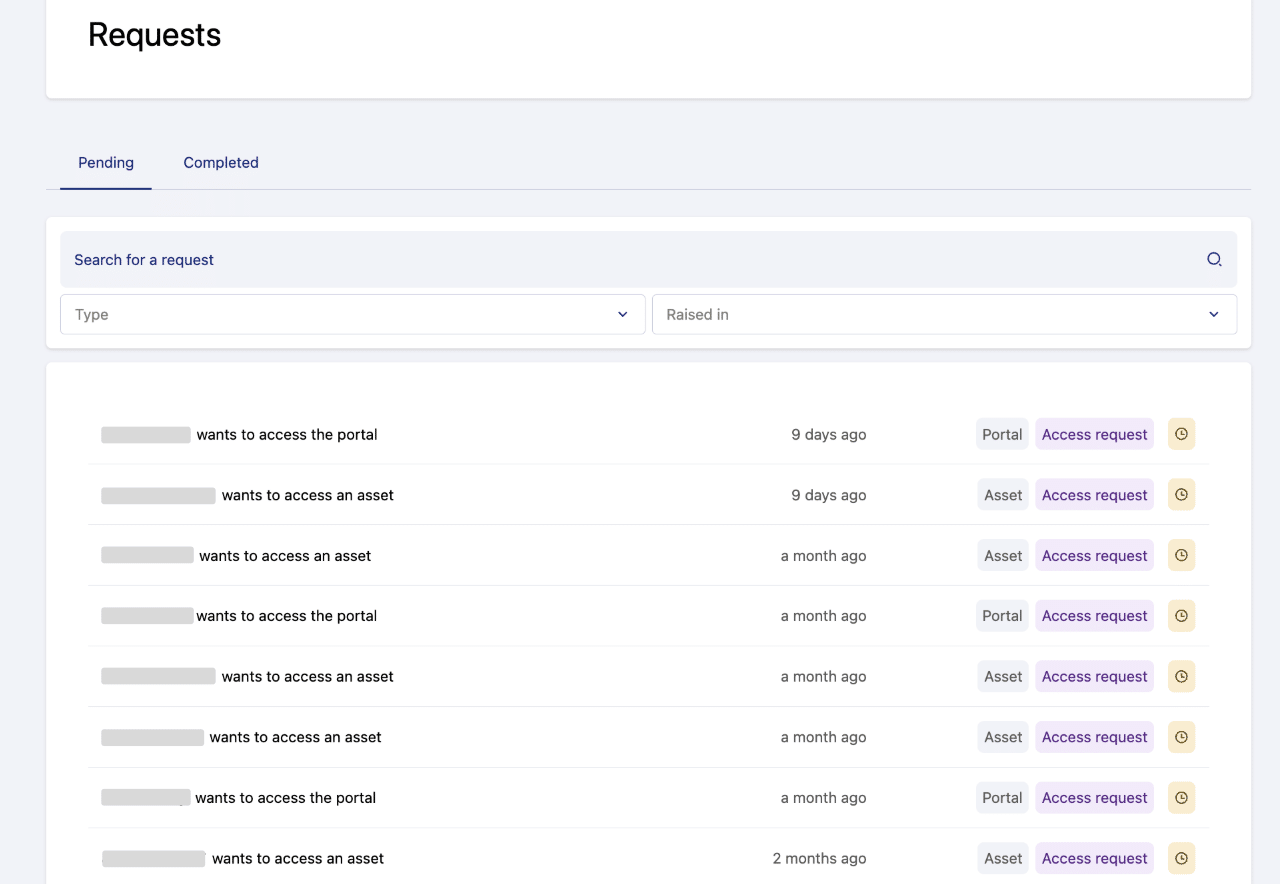
A simple form on the dataset’s page allows users to request access. Request processing is then carried out in line with internal rules, without having to leave the platform.
3. Collect data and requirements via integrated and customizable forms: engage business users to enrich your data marketplace
Business teams possess a wealth of information that can add value to a data marketplace and should be shared with data teams. Fully customizable integrated forms enable this data or user needs to be easily collected and then submitted for approval. Once validated, this information can then be automatically transformed into dashboards or datasets accessible by everyone on the data marketplace. These workflows facilitate collaboration between business users and data teams in order to continuously enrich the platform. Integrated forms and their workflows deliver immediate benefits across the data marketplace:
- By providing a wide variety of field types within the forms, enabling business contributions to be collected and transformed into consumable, actionable data on the marketplace
- Through advanced autocomplete capabilities that make form filling easier
- By offering the means to approve, modify or reject contributions before their eventual publication to ensure data quality
On the Opendatasoft platform, this type of feedback can take the form of a concrete workflow. Clicking on a custom “Add an initiative” button opens an integrated form, with clear, easy to complete fields. Once sent, the request is queued, analyzed and prioritized by data teams.
These requests can then result in the creation of a new dataset or a dedicated visualization, which is then integrated into the marketplace. Others are used to adjust the roadmap, identifying recurring or priority needs.
This workflow creates a direct link between user expectations and data production. Users can share their needs through a structured framework, teams have clear visibility to manage requests, and the marketplace becomes a space for collaboration rather than just a data store.
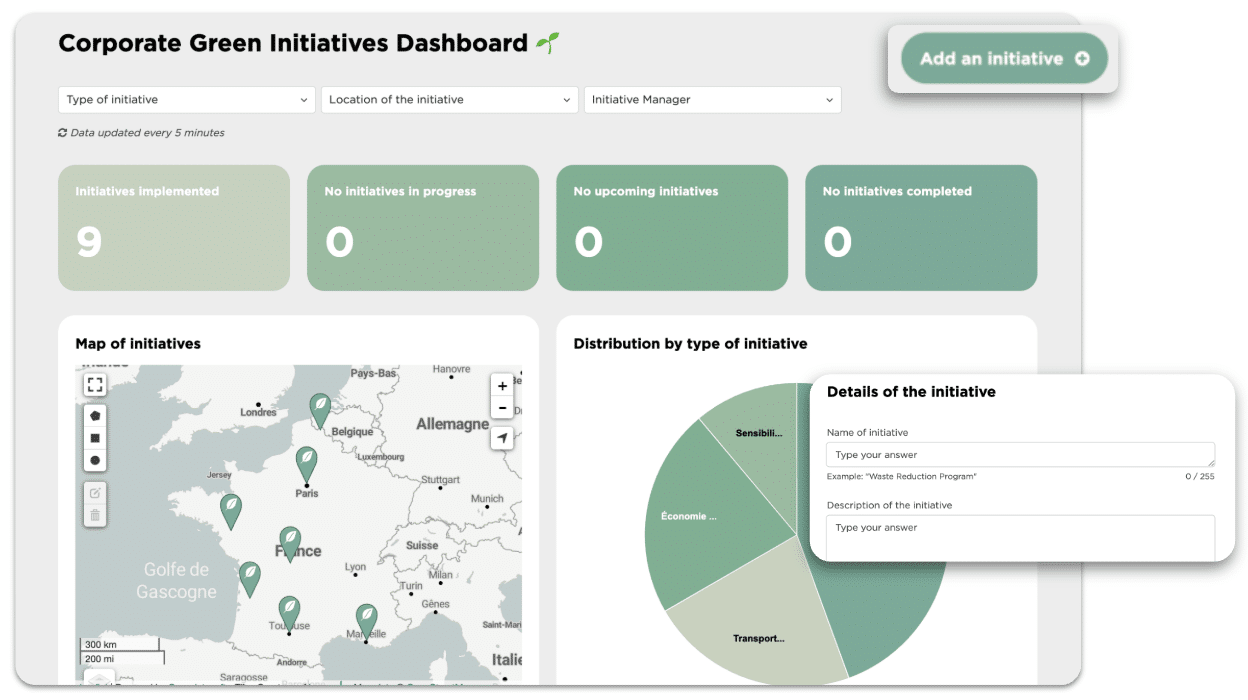
The “Add an initiative” button opens a simple form that structures the submission of specific business needs, driving a workflow that guides marketplace management and growth.
Bringing workflows to life, driving value
Setting up a workflow on a data marketplace shouldn’t require complex or time-consuming technical work. It has to be simple and immediate, structuring the unstructured, whether it is an access request, use case sharing or collecting new user requirements. In a few moments, processes are organized, roles are defined, and decisions become traceable.
Benefits follow equally quickly. Data becomes actionable. Business users know how to communicate around data, data teams gain clarity on user expectations, and conversations move away from informal or dispersed channels. The result is less friction, greater data consumption, and a platform that is enriched as it is used.
This is exactly what Opendatasoft offers. A data marketplace where workflows are not add-ons, but native capabilities that are designed to streamline interactions, enhance the value of each dataset, and create common ground between teams.
For organizations that want to make their assets usable, better connect data and business, and create a real collaborative dynamic around their assets, workflows are not an added extra. They are central to transforming data into lasting value.
